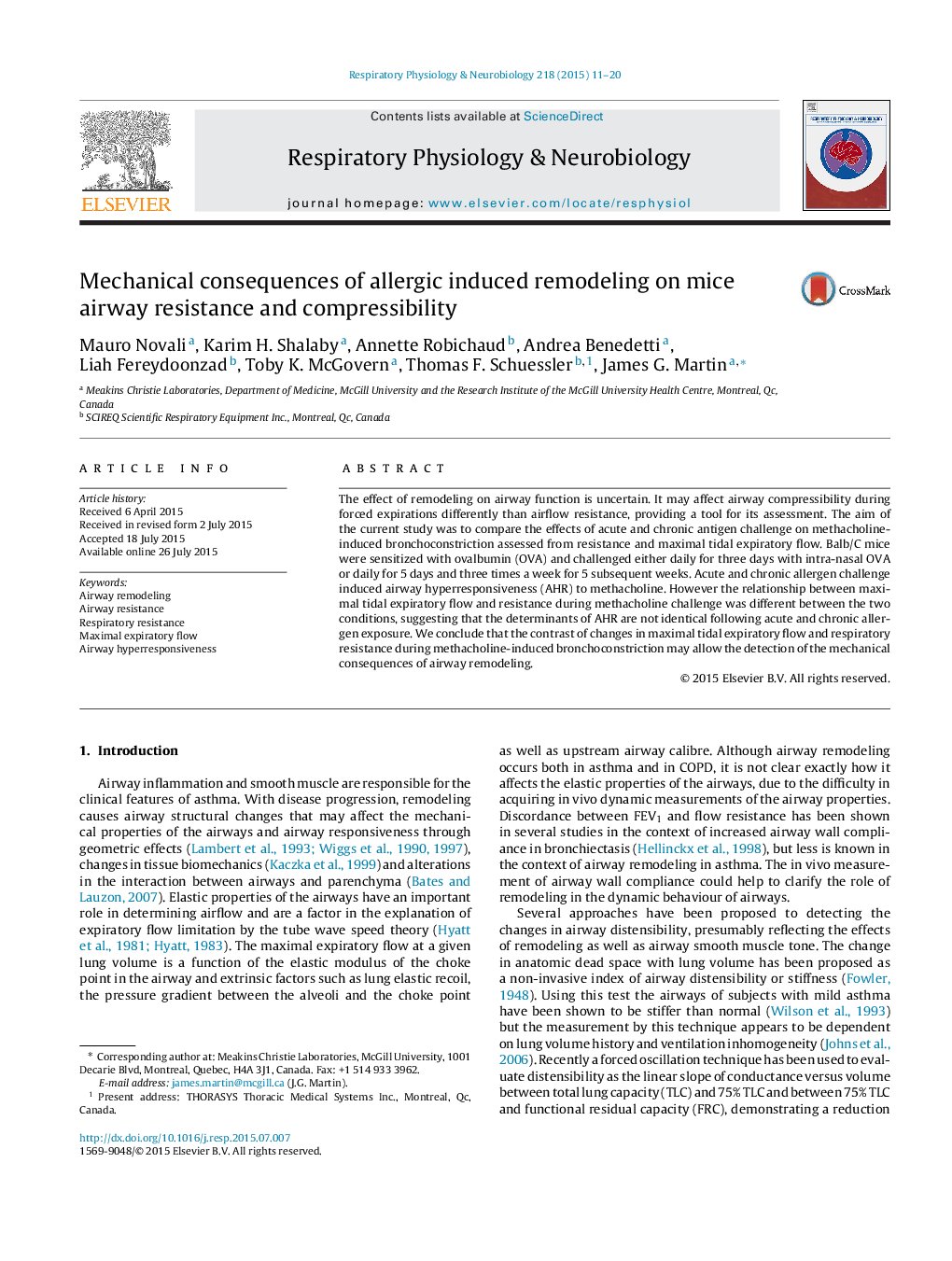| Article ID | Journal | Published Year | Pages | File Type |
|---|---|---|---|---|
| 2846820 | Respiratory Physiology & Neurobiology | 2015 | 10 Pages |
•We studied the mechanical consequences of airway remodeling in mice.•We examined the relationship between maximal tidal expiratory flow and airflow resistance following methacholine-induced bronchoconstriction in mice subjected to acute and chronic antigen challenge protocols.•The results we obtained show that the technique employed has promise for providing novel insight on the role of airway remodeling in airway hyperresponsiveness.
The effect of remodeling on airway function is uncertain. It may affect airway compressibility during forced expirations differently than airflow resistance, providing a tool for its assessment. The aim of the current study was to compare the effects of acute and chronic antigen challenge on methacholine-induced bronchoconstriction assessed from resistance and maximal tidal expiratory flow. Balb/C mice were sensitized with ovalbumin (OVA) and challenged either daily for three days with intra-nasal OVA or daily for 5 days and three times a week for 5 subsequent weeks. Acute and chronic allergen challenge induced airway hyperresponsiveness (AHR) to methacholine. However the relationship between maximal tidal expiratory flow and resistance during methacholine challenge was different between the two conditions, suggesting that the determinants of AHR are not identical following acute and chronic allergen exposure. We conclude that the contrast of changes in maximal tidal expiratory flow and respiratory resistance during methacholine-induced bronchoconstriction may allow the detection of the mechanical consequences of airway remodeling.
